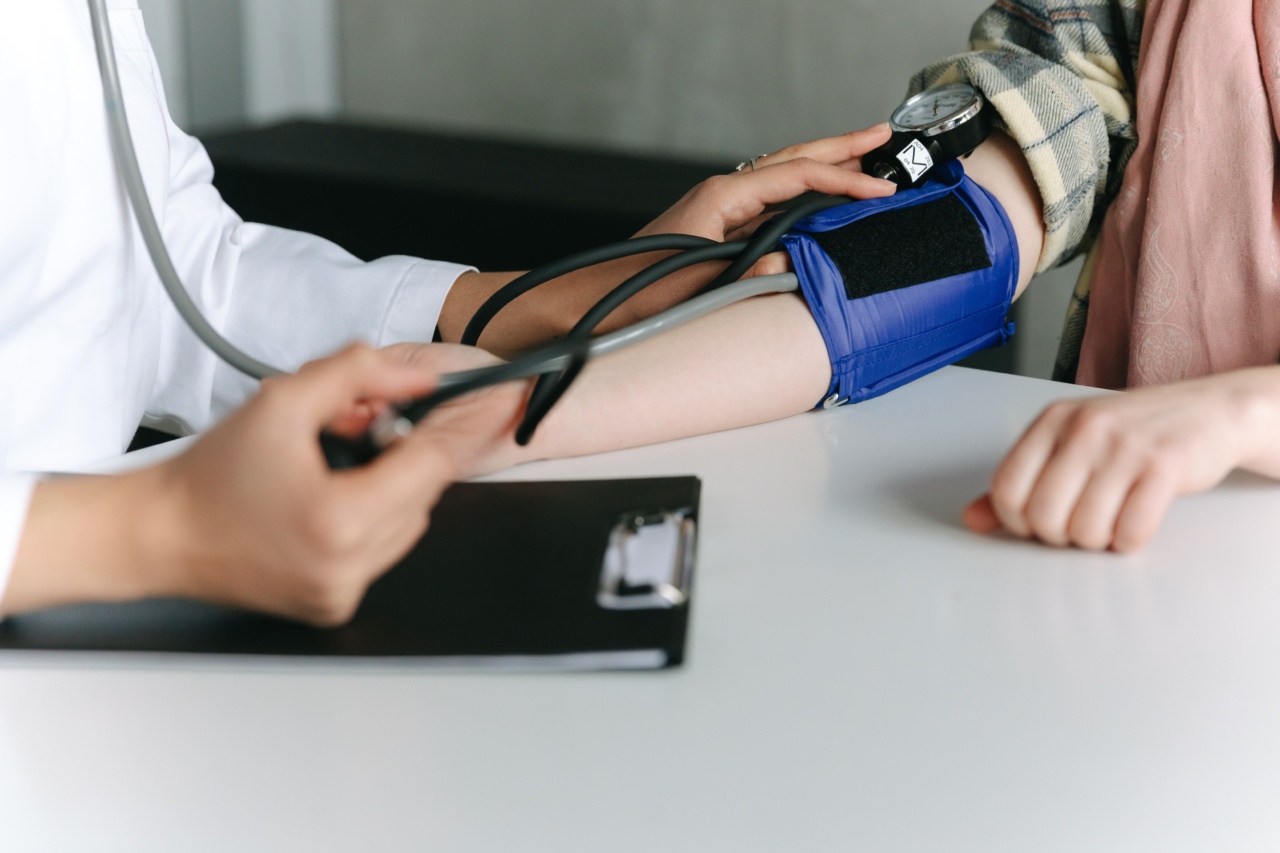Hypertension, or high blood pressure, is a silent killer that affects millions of people worldwide. According to the World Health Organization (WHO), hypertension is responsible for 7.5 million deaths every year.
It is a major risk factor for heart disease, stroke, and kidney failure. Monitoring blood pressure regularly and accurately is crucial for managing hypertension effectively. However, many individuals may unknowingly measure their blood pressure incorrectly, leading to inaccurate readings and potential health risks.
In this article, we will explore the correct methods of measuring blood pressure to ensure accurate results and effective hypertension management.
The Importance of Accurate Blood Pressure Measurements
Accurate blood pressure measurements serve as a vital tool in diagnosing and managing hypertension. They provide insights into the effectiveness of treatments and help healthcare professionals assess an individual’s cardiovascular health.
By measuring blood pressure correctly, individuals can take appropriate actions to control their hypertension and reduce the risk of associated complications.
Understanding Blood Pressure Readings
Before delving into how to measure blood pressure correctly, it is important to understand what blood pressure readings signify. Blood pressure is typically expressed as two numbers, with one number written on top of the other.
The top number, known as the systolic pressure, represents the pressure in the arteries when the heart contracts or beats. The bottom number, known as the diastolic pressure, represents the pressure when the heart is at rest between beats.
Both systolic and diastolic pressures are important indicators of an individual’s overall cardiovascular health.
Elevated blood pressure measurements indicate increased strain on the heart and blood vessels, which can lead to serious health problems over time if left unaddressed.
Choosing the Right Blood Pressure Monitoring Device
To measure blood pressure accurately, it is crucial to select the right monitoring device. The two main types of devices are manual and digital blood pressure monitors.
Manual monitors require a stethoscope and a sphygmomanometer, while digital monitors are automatic and display readings digitally.
While both types can provide accurate measurements, digital blood pressure monitors are widely recommended due to their ease of use and accuracy.
When choosing a digital monitor, it is important to ensure that it is validated and approved by regulatory authorities or medical organizations.
Preparing for Blood Pressure Measurement
Proper preparation is necessary to obtain accurate blood pressure readings. Before measuring your blood pressure, follow these steps:.
- Ensure you are in a quiet and comfortable environment.
- Avoid consuming caffeine, alcohol, or tobacco products for at least 30 minutes before measurement.
- Empty your bladder to ensure accurate readings.
- Rest for at least five minutes before measurement.
Correct Positioning Matters
The correct positioning of the body during blood pressure measurement is crucial for accurate readings. Follow these guidelines:.
- Sit in a chair with your back straight and supported.
- Place both feet flat on the floor.
- Rest your arm on a flat surface, such as a table, with the upper arm at heart level.
- Ensure your arm is supported and relaxed.
Using the Right Cuff Size
Using the appropriate cuff size plays a significant role in obtaining accurate blood pressure measurements. Cuff size should be determined based on the circumference of the upper arm. Wearing an incorrectly sized cuff can lead to misleading readings.
A cuff that is too small may result in artificially high readings, while a cuff that is too large may lead to artificially low readings. Consult with your healthcare professional to ensure the correct cuff size is used for your arm circumference.
Steps for Measuring Blood Pressure
Now that you have prepared yourself and positioned your body correctly, follow these steps to measure your blood pressure:.
- Wrap the cuff snugly around your upper arm, about two finger-widths above the bend in your elbow.
- Ensure the cuff is level with your heart.
- Press the start button on the digital monitor or inflate the cuff manually until it reaches around 180 mmHg.
- Gently deflate the cuff at a rate of 2-3 mmHg per second by pressing the release button or releasing the air valve.
- Observe the monitor’s display for the systolic and diastolic pressures.
Interpreting and Recording Blood Pressure Readings
Once you have obtained your blood pressure readings, it is important to understand and record them accurately. Blood pressure values are typically presented as systolic pressure over diastolic pressure, such as “120/80 mmHg.”.
Here is a general guideline for interpreting blood pressure readings:.
- Normal: Below 120/80 mmHg
- Elevated: 120-129/<80 mmHg
- Hypertension Stage 1: 130-139/80-89 mmHg
- Hypertension Stage 2: 140/90 mmHg or higher
- Hypertensive Crisis: Higher than 180/120 mmHg
Record your blood pressure readings accurately, along with the date and time. Sharing these readings with your healthcare professional can provide valuable information for managing your hypertension effectively.
Regular Blood Pressure Monitoring and Follow-up
Measuring your blood pressure accurately is not a one-time task. Regular monitoring is crucial for tracking changes, evaluating the effectiveness of treatments, and making necessary adjustments.
Your healthcare professional can guide you on how often you should measure your blood pressure based on your specific circumstances.
Moreover, regular follow-up appointments with your healthcare professional are essential to assess your overall cardiovascular health and the progress in managing your hypertension.
These appointments allow for necessary adjustments to medications or lifestyle modifications.
Conclusion
Measuring blood pressure accurately is a fundamental aspect of managing hypertension effectively. By following the correct procedures for preparation, positioning, cuff sizing, and monitoring, individuals can ensure accurate readings.
Regular blood pressure monitoring and follow-up appointments with healthcare professionals play a vital role in maintaining optimal cardiovascular health and minimizing the risks associated with hypertension. By taking proactive measures, individuals can tame their hypertension and live a healthier life.





























